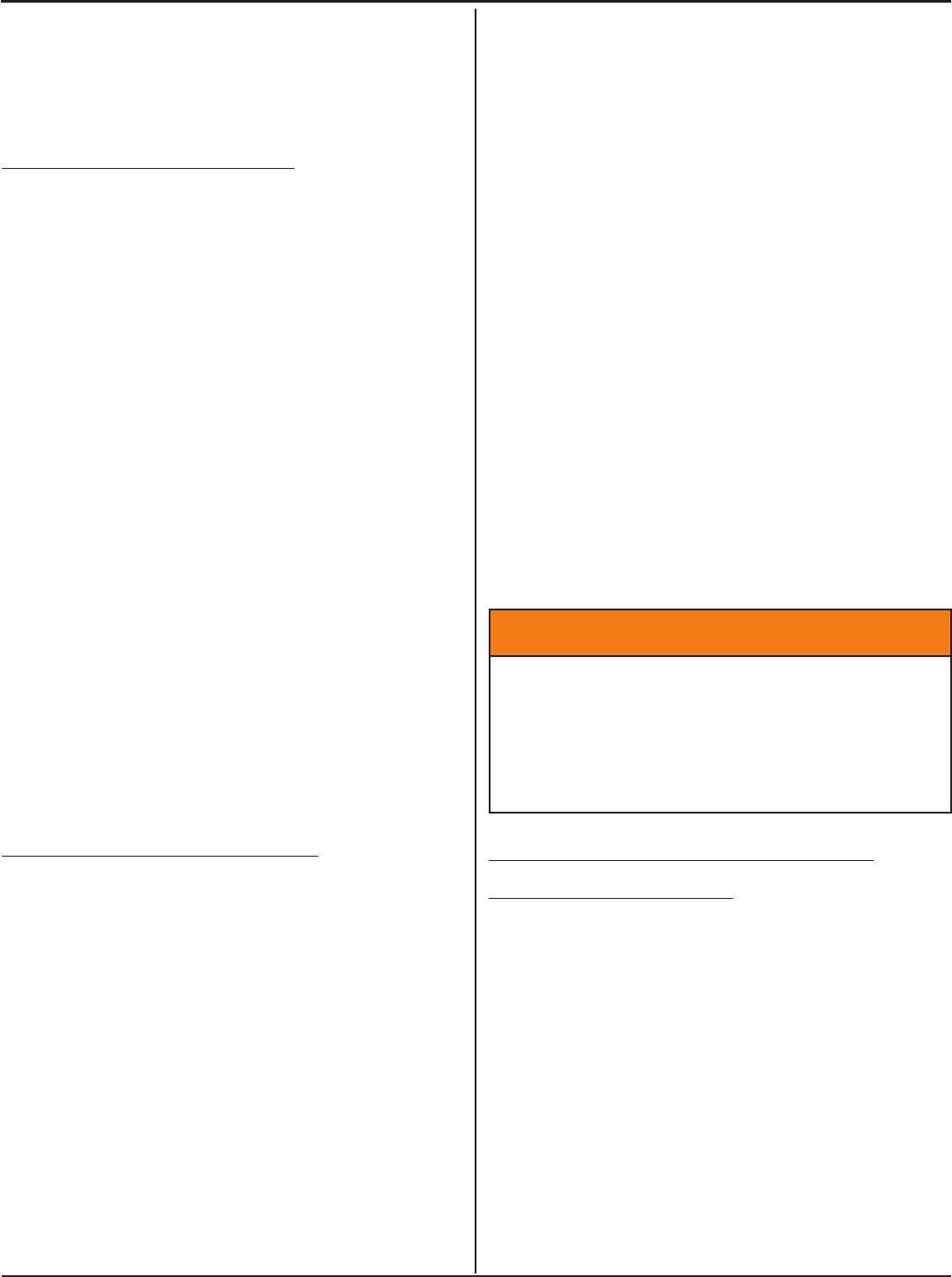Operating Guide

48
Check uid level prior to using the trailer. The master
cylinder is normally located on the tongue of the
trailer. The uid level must maintained at full mark on
reservoir. Check with your dealer for the type of brake
uid used in the brake system.
9.2.3.2 hydraulIc Surge Brake
Before each tow, perform the following steps:
1. Check that the brake master cylinder level as
instructed above. Check for leaks and repair as
required.
2. Examine the actuator for wear, bent parts, corroded/
seized parts, or other damage. Have the affected
components replaced with genuine service parts.
3. Check to determine that the actuator mounting bolts
are tightened to the manufacturer’s specication.
4. Test the actuator and brake function as described
in the Coupling To Tow Vehicle section of this
manual. Actuator travel over one inch indicates
that the brakes need adjustment (or that the
actuator has been structurally damaged). Actuator
travel is the distance the coupler case assembly
moves to the outer case during braking. Adjust the
brakes following the instructions given in the brake
installation manual. Failure to adjust brakes will
result in loss of braking.
5. Before storage or after extended use, apply motor
oil to the coupler components and the internal
rollers to keep them moving freely and to prevent
corrosion.
6. See the surge brake manufacturer’s manual for
other inspection and maintenance activities. If you
do not have this manual, contact your dealer for
assistance.
9.2.3.3 maSter cylInder BleedIng
Remove the master cylinder’s cap and ll the reservoir
to three quarters full with DOT-3 or DOT 4 brake uid.
DO NOT allow brake uid to contact painted surfaces
since it will damage the nish. Wipe up any spills
immediately and wash the area with water.
Bleed the brake system manually or with a pressure
bleeder. Pressure bleeding equipment simplies the
process, and is available at most automotive supply
stores. Use the instructions provided with the pressure
bleeder. If you chose to manually bleed the system,
an assistant is required. Use the following steps to
manually bleed the brake system:
1. Disconnect the trailer from the tow vehicle and jack
the trailer’s tongue until it is horizontal. Make sure
that the wheels are blocked so that the trailer will
not roll away.
2. Fill the master cylinder with correct uid.
3. Install a bleeder hose on the bleeder screw of the
farthest wheel cylinder from the actuator. If the
trailer has multiple axles, bleed the rear axle rst.
Submerse the other end of the hose in a glass
container of brake uid, so that air bubbles can be
observed.
4. Open the bleeder screw and have an assistant
stroke (but not release) the actuator. Brake uid
and/or air bubbles will ow into the jar. Close the
bleeder screw. The helper can then allow the
actuator to return to its rest position.
5. Repeat the process until no more bubbles are
released with the stroke. Air trapped in the brake
lines will greatly reduce your braking efciency. Be
sure to close the bleeder screw securely when the
cylinder is fully bled. Repeat the bleeding operation
at each wheel cylinder. During the bleeding process,
replenish the master cylinder reservoir with fresh
brake uid so that the level does not fall below half
full. This will ensure that no air is drawn into the
system.
6. After all brakes have been bled, rell the master
cylinder before operating. Be sure to install the
master cylinder ller cap.
^ WARNING
Use only fresh brake uid from a sealed
container. DO NOT reuse uid. After lling
and bleeding, rell the actuator.
Failure to maintain an adequate uid level
may cause brake failure.
9.2.4 traIler connectIon to tow VehIcle
9.2.4.1 coupler and Ball
Before each tow, coat the ball with a thin layer of
automotive bearing grease to reduce wear and ensure
proper operation; and check the locking device that
secures the coupler to the ball for proper operation.
See the coupler manufacturer’s manual for other
inspection and maintenance procedures. If you do not
have this manual, contact your dealer for assistance.
If you see or feel evidence of wear, such as at spots,
deformations, pitting or corrosion, on the ball or coupler,
immediately have your dealer inspect them to determine
the proper action to prevent possible failure of the ball
and coupler system. All bent or broken coupler parts
must be replaced before towing the trailer.
Inspection, Service And Maintenance










